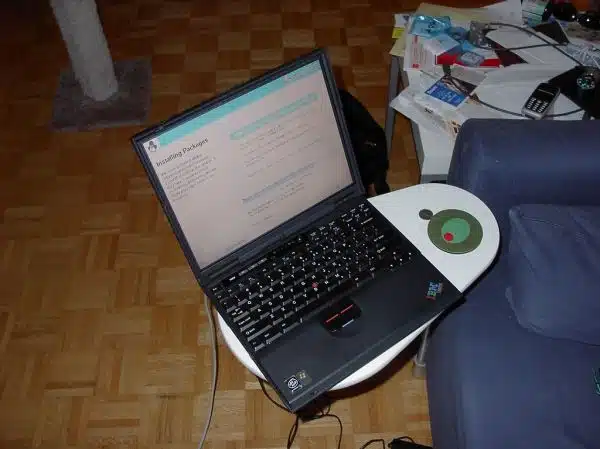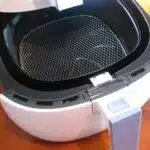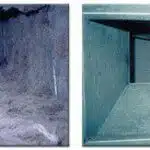Maintaining the cleanliness of laptops is an essential task that laptop users should prioritize. It is not only for aesthetic purposes but also for the proper functioning of the device. Dirt, dust, and grime can accumulate on the surface of a laptop, causing its fans to work harder and potentially leading to overheating issues. In addition, bacteria and viruses can easily thrive on these surfaces, posing health risks to users. Knowing how to clean laptops properly is crucial for its longevity and optimal performance.
As a laptop cleaning expert, I understand the importance of keeping laptops clean and sanitized. The process involves more than just wiping away visible dirt or dust from the surface; it requires careful attention to detail and proper techniques to prevent damage to the device. In this article, I will guide you through step-by-step instructions on how to effectively clean your laptop without causing harm to its components. By following these simple yet effective methods, you can ensure that your laptop remains in top condition while also protecting yourself from harmful bacteria and viruses.
Why Proper Laptop Cleaning Is Important
Proper laptop cleaning is an essential aspect of maintenance that every computer owner should prioritize. By regularly cleaning your device, you can prevent the accumulation of dirt, dust, and debris, which can cause significant damage to its internal components. The benefits of regular cleaning are numerous and include improved performance, increased lifespan, and reduced risk of hardware failure.
When laptops are not cleaned regularly, they tend to overheat due to the buildup of dust and debris in the cooling system. This overheating can cause various issues such as sudden shutdowns, blue screen errors, and decreased battery life. Overheating also puts a strain on the internal components which can lead to permanent damage and costly repairs.
The impact of dirty laptops on performance cannot be overstated. Dust accumulation in key areas such as the keyboard and trackpad can hinder their functionality while clogged fans can impede airflow leading to slower processing speeds. Regular cleaning ensures that these issues are mitigated before they become problematic. In summary, proper laptop cleaning is crucial for maintaining optimal performance and avoiding costly repairs caused by neglecting this essential task.
To maintain your laptop’s health optimally at all times requires basic tools you will need to have on standby for quick cleanups whenever necessary.
Basic Tools You Will Need
Many people believe that cleaning a laptop requires expensive and specialized tools. However, this is not entirely true. While it is true that some cleaning tools are designed specifically for laptops, such as compressed air cans, there are basic tools that can be used to clean a laptop effectively. These include cleaning solutions and cleaning cloths.
Cleaning solutions can be purchased from computer stores or online retailers. It is important to choose a solution specifically designed for electronic devices, as using the wrong solution can damage your laptop’s components. Some solutions come in spray bottles, while others may require dilution before use. A microfiber cloth or cotton swab should be used to apply the solution to the laptop’s surface.
When choosing a cloth for cleaning your laptop, it is important to avoid using rough materials such as paper towels or tissues as they can scratch the screen and other surfaces. Instead, opt for a soft microfiber cloth or lint-free cotton cloth. These materials will not leave any residue or lint on your device after cleaning.
Now that we have discussed some basic tools you will need for cleaning your laptop, let’s move on to preparing your device for cleaning by removing any dirt or debris from its surface.
Preparing Your Laptop For Cleaning
Before starting the cleaning process, it is important to prepare your laptop to avoid any damage. Firstly, make sure that your laptop is turned off and unplugged from the power source. This will prevent any electrocution or damage to the hardware while cleaning. Additionally, remove any external devices such as USB drives or headphones that are connected to the laptop.
Cleaning products can be harmful if not used properly. It is essential to avoid using harsh chemicals like ammonia, bleach, or alcohol-based products as they can damage the screen’s coating or discolor the keyboard and trackpad. Instead, use a microfiber cloth dampened with distilled water or a 50/50 solution of distilled water and white vinegar to clean the screen and keyboard.
To prevent any damage during cleaning, always follow best practices. Avoid applying too much pressure while wiping off dust or dirt from your laptop’s surface. Also, never spray cleaning solution directly onto your laptop; instead, spray it on a soft cloth before wiping down your device. Lastly, do not use any sharp objects such as paper clips or toothpicks to clean hard-to-reach areas like ports or vents.
Moving on to cleaning the exterior of your laptop, it is crucial to keep in mind that different materials require different cleaning methods. For instance, if you have a metal body laptop, use a non-abrasive metal cleaner and a soft microfiber cloth for gentle scrubbing. If you have a plastic body laptop, gently wipe down with a damp cloth dipped in mild soap water solution.
By following these simple steps for preparing your laptop for cleaning and practicing best practices for preventing damage during cleaning sessions while avoiding harmful chemicals like ammonia-based cleaners will ensure that your laptop remains in pristine condition for years to come. In the next section of this article let’s discuss how we can effectively clean our laptops’ exteriors without damaging them further!
Cleaning The Exterior Of Your Laptop
Just as a soldier prepares his armor before going to battle, you should prepare your laptop for cleaning. Before wiping away any dust or dirt, make sure that all cords and cables are unplugged. Turn off the laptop and remove the battery, if possible. This will prevent any electrical damage while cleaning.
Cleaning your laptop’s exterior is essential in maintaining its physical appearance and prolonging its lifespan. Start by using a microfiber cloth to gently wipe away any dust or dirt on the surface of your laptop. If there are any stubborn stains or marks, use a mild detergent mixed with water to clean it up. You can also use specialized cleaning solutions designed specifically for laptops to ensure that no harm comes to your device.
Don’t forget about cleaning your laptop bags and sleeves! These items often collect dirt and grime from daily use, which can transfer onto your laptop when stored inside them. Use a damp cloth with some soap to wipe down the exterior of these accessories thoroughly. Once it’s dry, you’ll have a fresh and clean bag or sleeve ready for use again!
Cleaning The Keyboard And Touchpad
To keep your laptop in good working order, it’s important to regularly clean the keyboard and touchpad. This will not only make it more pleasant to use, but can also help prevent the spread of germs. Before cleaning, make sure your laptop is turned off and unplugged.
Start by using a soft, dry cloth to wipe away any loose debris from the keyboard and touchpad. Next, dampen a microfiber cloth with water or rubbing alcohol and gently wipe down the surfaces. Be careful not to get any liquid inside the keys or touchpad.
In addition to cleaning the keyboard and touchpad, it’s also a good idea to clean your laptop charger and disinfect the touchpad. To clean the charger, simply wipe it down with a dry cloth. To disinfect the touchpad, use a solution of 70% isopropyl alcohol and water on a microfiber cloth and gently wipe down the surface. With these steps complete, you’re ready to move on to cleaning your screen.
Cleaning The Screen
The screen of a laptop is one of the most important components that requires regular cleaning. It is the primary interface between the user and the computer. A dirty screen can cause eye strain, reduce visibility, and even lead to scratches or damage to the display.
To clean your laptop screen effectively, it is recommended to use a microfiber cloth or screen-cleaning wipes. Avoid using paper towels or tissues as they may scratch the surface of your screen. Screen protectors are also great for preventing scratches and reducing glare on your display.
DIY screen cleaning solutions are also an option for those who prefer natural cleaning methods. A simple mixture of equal parts water and vinegar can be used with a microfiber cloth to gently clean your screen without leaving any streaks or residue. Alternatively, you can mix rubbing alcohol and distilled water in a 1:1 ratio and apply it to your screen with a soft cloth for effective cleaning.
Next, we will move on to cleaning the ports and vents of your laptop. It is important to keep these areas clean in order for your laptop to function properly and avoid overheating.
Cleaning The Ports And Vents
To keep your laptop functioning at its best, it’s important to regularly clean the ports and vents. Dust and debris can accumulate in these areas and cause a blockage, which can lead to overheating or other issues. To clean the ports and vents, you’ll need a few basic tools: a microfiber cloth, cotton swabs, and a can of compressed air.
Start by shutting down your laptop and unplugging it from any power source. Next, use the microfiber cloth to gently wipe down the exterior of the laptop to remove any surface dust or debris. Then, take a cotton swab and carefully insert it into each port to remove any visible dirt or grime. Be gentle as you do this so as not to damage the port.
Cleaning laptop fans is also an important part of maintaining your device. Over time, dust can accumulate on the fan blades, causing them to spin more slowly or not at all. This can lead to overheating and other performance issues. To clean the fans, use a can of compressed air to blow out any dust or debris that may have accumulated on the blades. Hold the can about six inches away from the fan while spraying and be sure not to tilt it too much as that could cause moisture buildup in your device’s components.
| Pros | Cons |
|---|---|
| Improves laptop performance | Requires additional tools |
| Prevents overheating | Can be time-consuming |
| Extends lifespan of device | May require professional cleaning |
Transitioning into using compressed air for deep cleaning: Now that you have thoroughly cleaned your laptop’s ports and vents using a microfiber cloth and cotton swabs, it’s time for some deep cleaning with compressed air. In this next section, we will look at how using compressed air can help clear out any remaining dust or debris inside your laptop for optimal performance.
Using Compressed Air For Deep Cleaning
After cleaning the ports and vents, it’s time to move on to deep cleaning your laptop. One effective method for this is using compressed air. However, there are alternative methods that can also be used, especially when dealing with stubborn dirt and grime.
Using specialized cleaners is a great way to deep clean your laptop. These cleaners are specifically designed for electronics and won’t damage your device. Be sure to read the instructions carefully before using any cleaner and avoid spraying directly onto the screen or keyboard. Instead, spray onto a microfiber cloth and gently wipe down the surfaces.
Another alternative method for deep cleaning laptops is using a mixture of water and vinegar. This solution is particularly useful for removing smudges from screens and sticky residue from keyboards. Mix equal parts water and vinegar in a spray bottle, spray onto a microfiber cloth, and wipe down your laptop’s surfaces.
- Use a soft-bristled brush to remove any debris from between the keys.
- Never use abrasive materials such as steel wool or rough sponges.
- Always unplug your laptop before cleaning to avoid electrical shocks.
- Don’t forget to clean the bottom of your laptop as well.
- If you’re unsure about how to clean certain parts of your device, consult the manufacturer’s website or support team.
As an expert in laptop cleaning, it’s important to remember that different models require different care. In the next section, we’ll provide tips for cleaning specific types of laptops so you can keep yours looking like new.
Tips For Cleaning Specific Types Of Laptops
Ah, the joys of cleaning laptops. It’s a task that everyone loves to do, but no one really wants to do. However, if you’re going to clean your laptop, you might as well do it properly. In this section, we’ll go over tips for cleaning specific types of laptops.
First and foremost, it’s important to consider the specific materials your laptop is made of when cleaning it. For example, if your laptop has a glass screen or frame, you’ll want to avoid using abrasive cleaners or rough cloths that could scratch the surface. If your laptop has a rubberized finish or non-glossy surfaces, be sure to use a soft cloth and mild cleaner to avoid damaging the material.
Another important factor to consider is how often you should be cleaning different types of laptops. If you use your laptop frequently and take it with you on-the-go often, then you’ll want to clean it more frequently than if you only use it at home occasionally. A good rule of thumb is to clean your laptop every few weeks or whenever you notice visible dust or smudges on the surface.
In summary, when cleaning your laptop it’s important to take into account the specific materials used in its construction and how often it needs to be cleaned based on usage frequency. By following these tips, you can help ensure that your laptop stays looking new and functioning properly for years to come. Now that we’ve covered some tips for cleaning specific types of laptops let’s move onto common mistakes people make when attempting this task.
Avoiding Common Cleaning Mistakes
Using the right cleaning supplies is essential when cleaning a laptop. Non-abrasive cleaning solutions and lint-free cloths should be used to avoid damage to the device. When cleaning a laptop, proper technique should be employed to ensure that no damage is done. It is important to never spray cleaning solution directly onto the laptop and to always work in a circular motion when wiping the device.
Using The Right Cleaning Supplies
Keeping your laptop clean is essential for its longevity and performance. However, using the wrong cleaning supplies can cause more harm than good. As a laptop cleaning expert, I highly recommend choosing eco-friendly cleaning supplies to avoid damaging your device and the environment.
When it comes to choosing cleaning supplies, it’s crucial to avoid harsh chemicals that can corrode your laptop’s delicate components. Instead, opt for eco-friendly options such as microfiber cloths and natural cleaners made from vinegar or lemon juice. These homemade solutions work wonders in removing dirt and grime without causing any harm to your device.
In addition to being safe for your laptop, eco-friendly cleaning supplies are also better for the environment. By reducing the use of harsh chemicals, you’ll be contributing to a cleaner planet while keeping your device in top shape. So next time you’re thinking about cleaning your laptop, remember to choose eco-friendly options and make a positive impact on both your device and the world around you.
Cleaning With The Proper Technique
When it comes to keeping your laptop clean, it’s essential to use the proper technique to avoid common cleaning mistakes. One of the most significant errors people make is using too much pressure when cleaning their laptop. This can cause damage to the delicate components of the device, resulting in costly repairs. As a laptop cleaning expert, I recommend using a gentle touch and avoiding any harsh scrubbing or rubbing.
Another common mistake when cleaning laptops is using the wrong cleaning products. Many commercial cleaners contain harsh chemicals that can corrode and damage the surface of your device. It’s important to avoid these types of products and instead opt for safe DIY laptop cleaning solutions such as vinegar or lemon juice mixed with water. These natural cleaners are effective at removing dirt and grime without causing any harm.
Finally, it’s crucial to clean your laptop regularly but not too often. Overcleaning can also be harmful, causing wear and tear on your device prematurely. As a general rule of thumb, aim to clean your laptop once every two weeks or as needed. By following these simple tips and techniques, you’ll be able to keep your laptop in top shape for years to come while avoiding common cleaning mistakes that could cost you in the long run.
How Often Should You Clean Your Laptop?
As discussed in the previous section, avoiding common cleaning mistakes is crucial to maintaining laptop hygiene. However, it’s also essential to keep a regular cleaning schedule to ensure that your laptop stays clean and functions optimally.
Cleaning frequency depends on how frequently you use your laptop and the environment in which you use it. Suppose you use your laptop daily and in a dusty or humid environment. In that case, we recommend cleaning it every two weeks to prevent debris from accumulating in the keyboard or vents.
To maintain your laptop’s hygiene, here are some tips on how often and what to clean:
- Keyboard: Wipe down the keys with a microfiber cloth every two weeks or as needed.
- Screen: Clean the screen with a microfiber cloth every week or as needed.
- Vents: Use compressed air to blow out dust from vents once a month. These are just general guidelines, so make sure to adjust them based on your usage patterns.
Now that you know how often to clean your laptop let’s move onto the next section about maintaining your laptop after cleaning.
Maintaining Your Laptop After Cleaning
Proper maintenance of your laptop is crucial in extending its lifetime and ensuring optimal performance. It is essential to develop a routine for laptop care to prevent damage caused by dust, dirt, and other harmful environmental factors. Neglecting regular maintenance may result in reduced efficiency and costly repairs.
One of the best practices for laptop care is to ensure that it remains clean at all times. Use a microfiber cloth or compressed air to remove dirt and debris from the keyboard, screen, fans, and vents regularly. Avoid using harsh chemicals as they can damage the laptop’s surface or cause discoloration.
Another important aspect of maintaining your laptop is keeping it cool. Overheating can cause serious damage to your device’s hardware components, including the battery, CPU, and motherboard. To prevent overheating, ensure proper ventilation by keeping the vents clear of obstructions and using a cooling pad if necessary. Additionally, avoid using your laptop on soft surfaces like a bed or couch as this can block air flow and increase heat retention.
Transition: Maintaining your laptop is vital for prolonging its lifespan and maximizing performance. However, proper cleaning alone may not be enough; sanitizing your device is equally important for health and safety reasons. Let’s explore some best practices for disinfecting your laptop in the next section.
Sanitizing Your Laptop For Health And Safety
While it is common knowledge that laptops need to be cleaned regularly, it is also important to sanitize them for health and safety reasons. With the ongoing COVID-19 pandemic, disinfecting your laptop has become even more crucial. However, there are many theories about the best ways to disinfect a laptop, and it can be confusing to know what works and what doesn’t.
One of the benefits of disinfecting your laptop is reducing the spread of germs and bacteria. When you use your laptop frequently, you may unknowingly transfer bacteria from your hands or other surfaces onto its keyboard or touchpad. Disinfecting your laptop regularly helps kill these germs and prevent them from spreading further. Additionally, sanitizing your laptop can help reduce the risk of contracting illnesses such as the flu or COVID-19.
When it comes to choosing the best disinfectant for your laptop, there are a few options available. One popular choice is using alcohol wipes with at least 70% isopropyl alcohol content. These wipes are effective in killing germs without damaging your device’s components. Another option is using hydrogen peroxide wipes or a solution with a concentration of at least 0.5%. However, it’s essential to avoid using bleach or other harsh chemicals that can damage your device’s surface or internal components.
As a laptop cleaning expert, I highly recommend sanitizing your device regularly for optimal health and safety. By understanding the benefits of disinfecting and choosing the right disinfectants for laptops, you can ensure that your device remains clean and healthy for prolonged use. In the next section, we will discuss some common issues that people face with their laptops and how to troubleshoot them effectively.
Troubleshooting Common Laptop Issues
Hardware problems with laptops can typically be diagnosed by examining the laptop’s performance, identifying any error messages, and running diagnostic software. To clean and maintain a laptop, the user should use a soft, lint-free cloth to wipe off any dust or dirt, and then use compressed air to further clean the keyboard and vents. Additionally, the laptop should be cleaned with a damp cloth and mild soap to remove any grease or grime. The user should also check the laptop’s battery and power cords for any signs of wear and tear and replace them if necessary.
Diagnosing Hardware Problems
When it comes to hardware maintenance of laptops, diagnosing hardware problems is an essential skill that all laptop owners need to learn. The first step in this process is to identify the problem by testing various hardware components such as the hard drive, RAM, and graphics card. Troubleshooting techniques such as running diagnostic software or performing a visual inspection can help identify the issue.
Once you have identified the problem, the next step is to fix it. Depending on the severity of the issue, this may involve replacing faulty hardware components or simply cleaning them. For example, if a laptop is overheating due to a clogged fan or heat sink, cleaning these components can often resolve the issue. However, if there is a more serious hardware failure such as a faulty motherboard or hard drive, replacement may be necessary.
To avoid further issues with your laptop’s hardware, it’s important to perform regular maintenance and follow best practices for handling and storing your device. This includes keeping your laptop clean and free from dust and debris that can clog internal components and cause overheating issues. Additionally, regularly backing up important data and files can prevent loss in case of future hardware failures. By taking these steps and staying informed on troubleshooting techniques for hardware problems, you can ensure that your laptop stays in top condition for years to come.
Cleaning And Maintaining Laptops
When it comes to troubleshooting common laptop issues, cleaning and maintaining your device is an essential aspect of hardware maintenance. Regular cleaning can help prevent overheating, improve performance, and prolong the lifespan of your laptop. The frequency of cleaning may vary depending on usage and environment, but it’s generally recommended to clean your laptop at least once every three months.
As a laptop cleaning expert, I recommend using eco-friendly cleaning methods that are safe for both you and your device. Avoid using harsh chemicals or abrasive materials that can damage the surface of your laptop or its internal components. Instead, use a soft microfiber cloth or compressed air to remove dust and debris from the keyboard, screen, and other areas.
In addition to regular cleaning, proper maintenance practices such as updating software and drivers can also help prevent common laptop issues. By staying informed on best practices for cleaning and maintaining laptops, you can ensure that your device remains in top condition while also protecting the environment with eco-friendly methods.
When To Seek Professional Help
Having covered the common issues that can trouble laptops in the previous section, it is now time to delve into the topic of cleaning these devices. While cleaning your laptop might seem like a straightforward task, there are some things you need to keep in mind. For instance, using the wrong cleaning products or techniques can do more harm than good.
Before we get into the specifics of how to clean a laptop, it is important to mention that there are times when seeking professional help is necessary. If your laptop has been dropped or exposed to liquid, for example, it is best to take it to an expert for assessment and repair. Similarly, if you notice any signs of damage such as cracks on the screen or a malfunctioning keyboard, seek professional help immediately.
Now that we have established when it’s appropriate to seek professional help let’s move on to discussing how to clean laptops properly. The first step is turning off your device and unplugging it from any power source. This ensures your safety and prevents damage from electrical shock. Next, use compressed air or a soft-bristled brush to remove any dust or debris from the keyboard and other parts of your laptop. Finally, use a microfiber cloth and a mild cleaning solution to wipe down the screen and casing gently.
In summary, while cleaning your laptop may seem like a simple task at first glance, there are several factors you must consider before getting started. Knowing when to seek professional help and recognizing signs of damage are important steps towards maintaining your device’s longevity. By following the proper cleaning techniques outlined above, you can keep your laptop looking great while also prolonging its lifespan.
Conclusion
Proper laptop cleaning is crucial for ensuring the longevity of your device and maintaining its performance. Not only does regular cleaning keep your laptop looking neat and tidy, but it also reduces the risk of hardware malfunctions caused by dust or debris buildup. In fact, a study conducted by SquareTrade found that 20% of all laptop failures are due to environmental factors such as dust and moisture.
To clean your laptop effectively, you will need basic tools such as microfiber cloths, compressed air cans, and cleaning solutions that are safe for electronics. Before beginning the cleaning process, make sure to shut down your device and unplug it from any power sources. Then, gently wipe down the exterior with a microfiber cloth and use compressed air to remove any dust or debris from the keyboard and touchpad.
After cleaning your laptop, it is important to maintain it properly by avoiding eating or drinking near it and storing it in a cool, dry place when not in use. Additionally, sanitizing your laptop regularly using disinfectant wipes can help prevent the spread of germs and bacteria.
If you encounter any issues during the cleaning process or notice persistent problems with your device after cleaning, don’t hesitate to seek professional help. Proper maintenance and care can help extend the life of your laptop and ensure its optimal performance for years to come.
Image Credits
- “non ghetto laptop #2” by nyxie (featured)





























